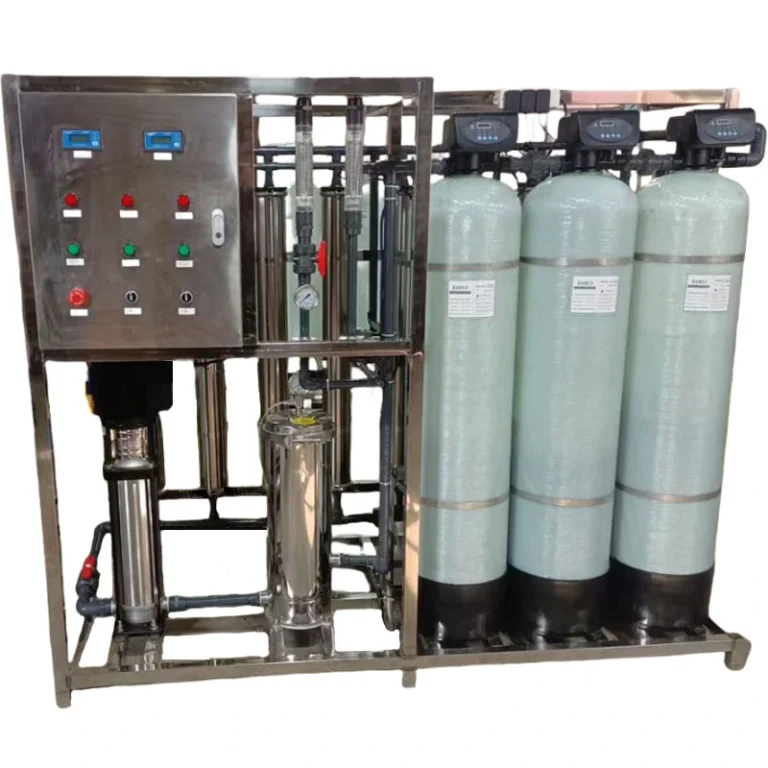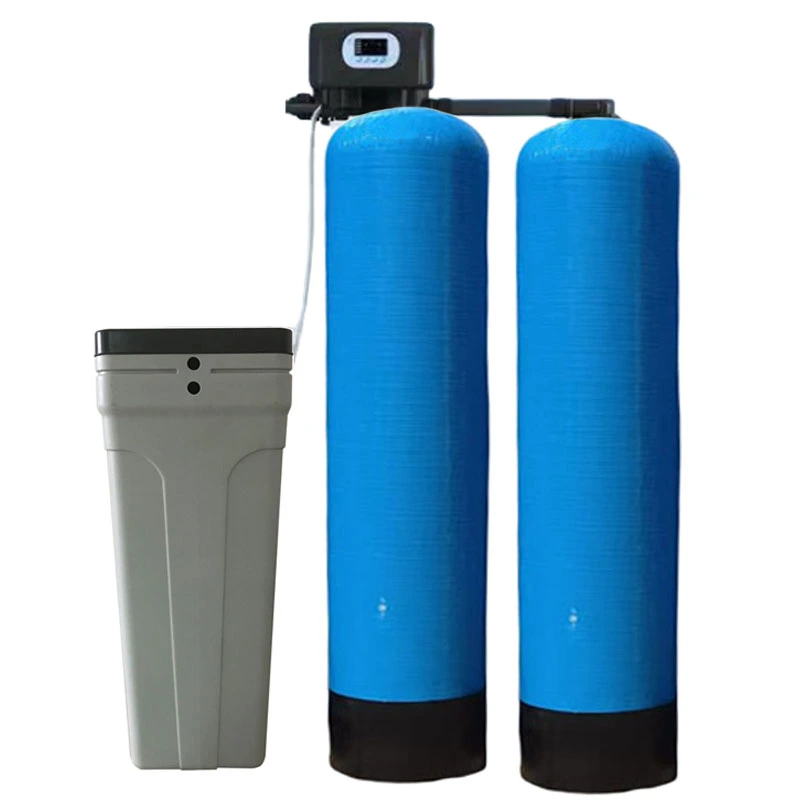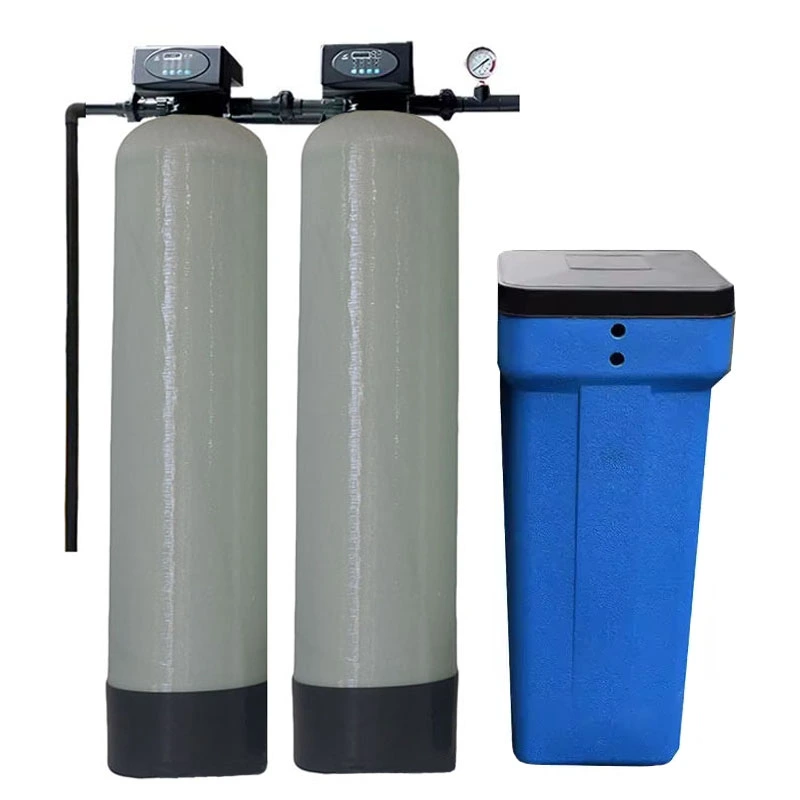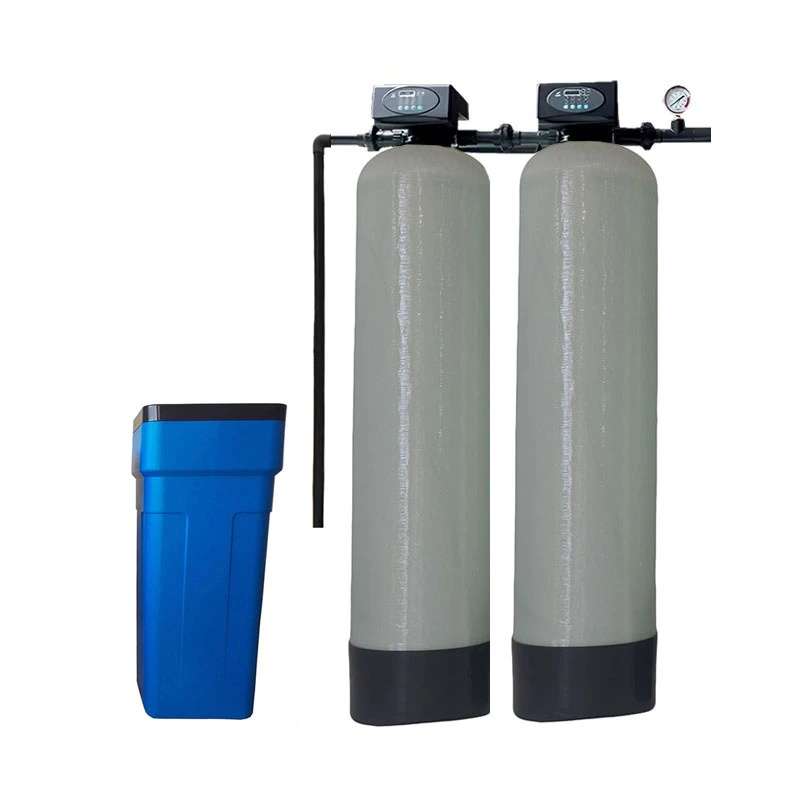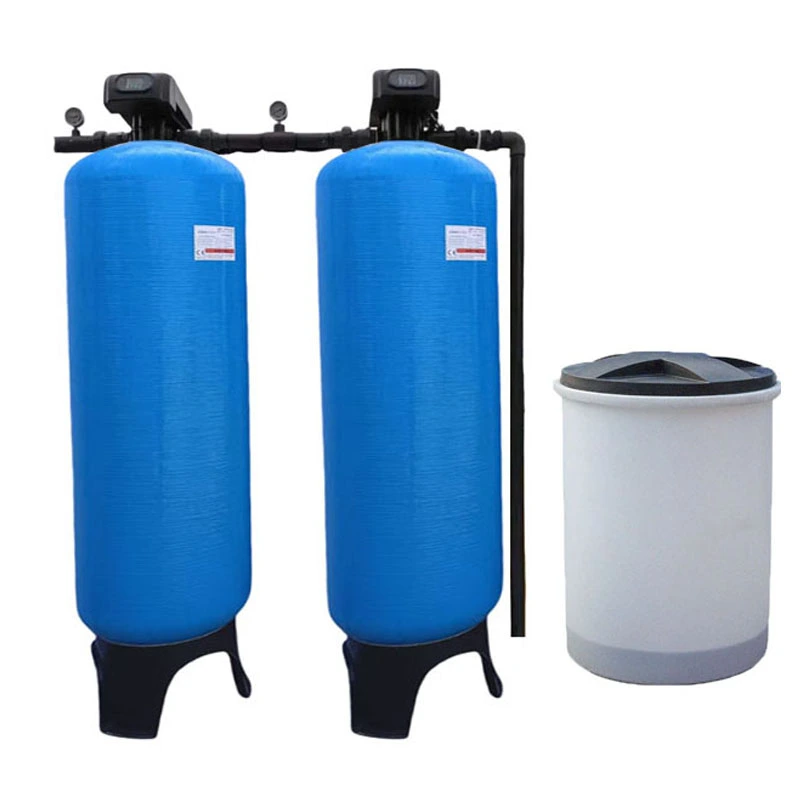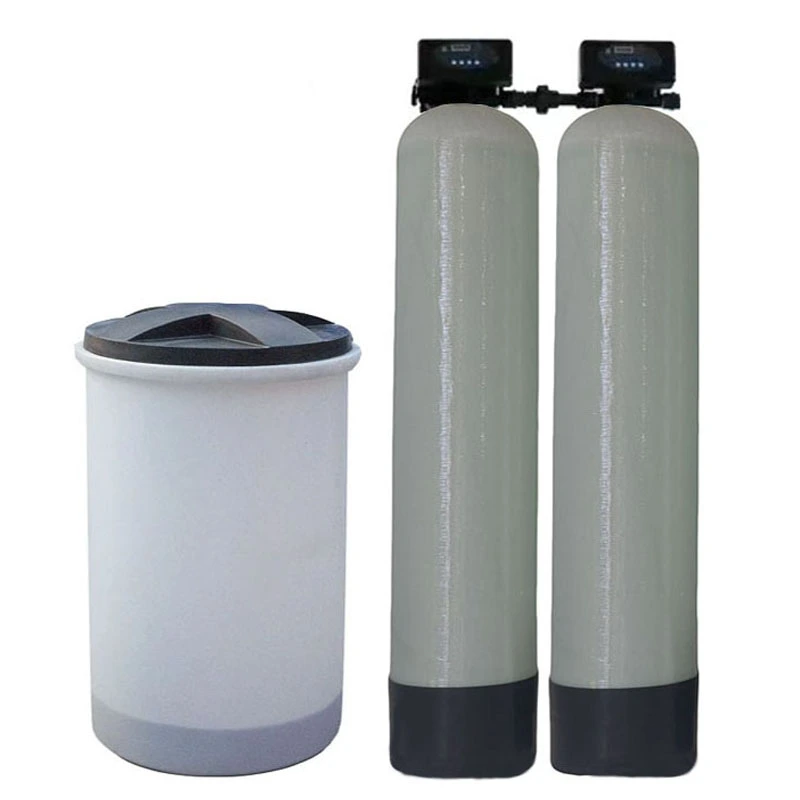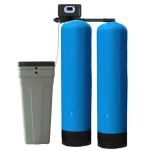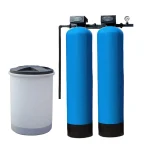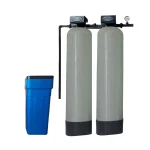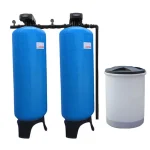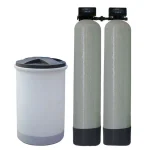BasideWT- Whole Home Water Filtration System & Replacement

Dual-Tank Continuous Water Softening System: The Ultimate Iron Filter Solution for Well Water
PRODUCT PARAMETERS
- Product Name: water softening system
- Filter Cartridge: Cation Exchange Resin
- Function: Fully Automatic
- Type: Ion Exchange Resin Softener
- Application: Hotel, Commercial, Household
- Use:Effectively softens, reduces iron, manganese and ammonium from water
- Raw Water: Tap Water
- Packing: Standard Exportation Package
Why Well Water Needs Specialized Treatment
If your home relies on well water, you’ve likely encountered stains, metallic tastes, or clogged pipes—all of which point to excess iron, manganese, and hardness minerals. To tackle these issues effectively, a dedicated Water Softening System for Well Water is essential—one that oxidizes, filters, and softens simultaneously.
Here’s what can happen if well water goes untreated:
Orange stains appear on sinks, tubs, and laundry,Scale builds up in pipes and appliances, reducing efficiency by 15–20%,Metallic tastes and sulfur-like odors affect your water’s quality.
The solution? A continuous dual-tank water softening system. With two tanks working in tandem, one unit filters your water while the other remains on standby. This smart setup ensures zero downtime and consistent water quality, so you’ll never face interruptions in your water supply.
Why is this better than a single – tank system? Let’s compare:
| Feature | Single – Tank Iron Filter | Dual – Tank (One Use, One Backup) |
| Continuous water flow | No (stops during cleaning) | Yes (seamless switch) |
| Maintenance frequency | Higher (needs manual cleaning) | Lower (automatic self – cleaning) |
| Suitable for family size | Small (1 – 2 people) | Large (3 + people, high water use) |
| Long – term cost | Higher (appliance damage from iron) | Lower (protects appliances) |
The dual – tank system uses special media to trap iron. It also softens water, tackling hard minerals at the same time. And with a automatic control valve, it’s all hands – off. The valve monitors water usage. It knows when to switch tanks. It even cleans the used tank automatically.
Step-by-Step Installation & Setup
- Test Your Water – Check iron (>0.3 ppm?), manganese, and hardness levels.
- Choose the Right Water Softening System – For heavy iron, opt for air-injection + dual tanks.
- Install Pre-Filters – A 5-micron sediment filter prevents clogging.
- Connect the Twin Tanks – Ensure bypass valves for easy maintenance.
- Program the Control Valve – Set regeneration based on water usage (not just time).
⚠ Warning: Avoid single-tank systems if iron exceeds 3 ppm—they’ll clog and fail!
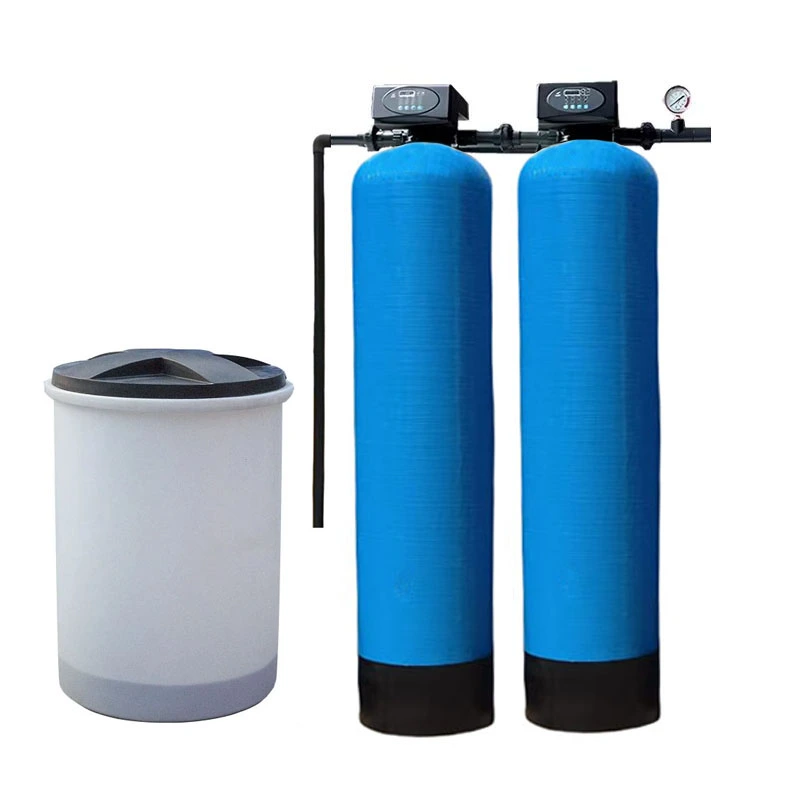
Real-World Case: How a Farm Solved Its Iron Problem
In 2023, a Texas ranch with 8 ppm iron installed our Softening System. Results?
- No more stains after 72 hours
- 40% less salt usage vs. traditional softeners
- 10+ year filter lifespan
Fun Fact: Their water heater efficiency improved by 18% after scale removal!
Common Mistakes to Avoid
Assuming all softeners remove iron (most don’t—they just soften!).Skipping pre-filtration (sediment ruins resin beds).Ignoring regeneration settings (wastes water and salt).
FAQs
Choosing the perfect water treatment system depends on your specific water quality, household size, and needs. We make it easy with our 3-step process:
Water quality testing – analyze your water for contaminants, hardness, and other factors.
Personalized Consultation – Our experts recommend systems based on your results, budget, and water usage.
Customized Solution – From whole-house filtration to targeted solutions (e.g., RO for drinking water, softeners for hard water), we tailor the system to your home.
To determine your water flow rate in gallons per minute (GPM), follow these simple steps:
Prepare for Testing:
- Prepare for Testing:
- Ensure all water fixtures in your home are turned off
- Select the faucet closest to your main water supply line (usually the kitchen sink or an outdoor spigot)
- Conduct the Test:
- Fully open the selected faucet
- Time how many seconds it takes to fill a 1-gallon container
- Repeat the test 2-3 times for accuracy
- Calculate Your Flow Rate:
Use this formula: Flow Rate (GPM) = 60 ÷ Fill Time (seconds)Example Calculation:- If your 1-gallon container fills in 15 seconds
- 60 ÷ 15 = 4 GPM
For more precise measurements or whole-home flow rate analysis, contact our water system specialists. We can help you determine if your current flow rate meets the requirements for any water treatment systems you’re considering.
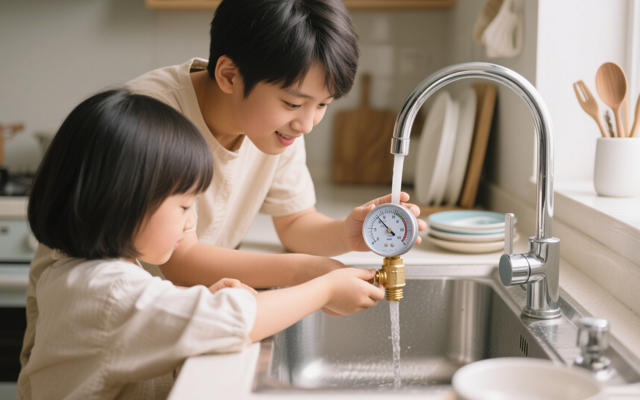
1. Check Multiple Fixtures
Test water pressure at different faucets, showers, and appliances (e.g., kitchen sink, bathroom sink, outdoor hose).
If only one fixture has low pressure, the problem is likely localized (clogged aerator, faulty valve, or pipe issue).
If all fixtures have low pressure, the issue is systemic (main supply, pressure regulator, or water heater).
2. Inspect the Aerator or Showerhead
Unscrew the faucet aerator or showerhead and check for mineral deposits, debris, or rust.
Soak it in vinegar overnight to dissolve buildup, then rinse and reattach.
3. Check the Main Shutoff Valve
Locate the main water shutoff valve (usually near the water meter or where the main line enters the house).
Ensure it’s fully open (turn clockwise to close, counterclockwise to open).
1. Activated Carbon Filters
- Removes:
✅ Chlorine & chloramines
✅ Bad tastes & odors (e.g., sulfur)
✅ Volatile Organic Compounds (VOCs)
✅ Some pesticides & herbicides
❌ Does not remove heavy metals, dissolved minerals, or microbes
2. Reverse Osmosis (RO) Systems
- Removes:
✅ Heavy metals (lead, arsenic, mercury, cadmium)
✅ Dissolved salts (fluoride, nitrates, sulfates)
✅ Microplastics & sediment
✅ Bacteria & viruses (if combined with UV)
✅ Chlorine & chemicals (with carbon pre-filter)
❌ May remove beneficial minerals (can be remineralized)
3. Water Softeners (Ion Exchange)
- Targets:
✅ Calcium & magnesium (hardness)
✅ Low levels of iron & manganese
❌ Does not remove bacteria, chlorine, or heavy metals
4. UV Purifiers
- Kills:
✅ Bacteria (E. coli, coliform)
✅ Viruses (rotavirus, hepatitis)
✅ Protozoa (Giardia, Cryptosporidium)
❌ Does not remove chemicals, metals, or sediment
5. Sediment Filters
- Removes:
✅ Sand, rust, dirt
✅ Large particles & silt
❌ Does not remove dissolved contaminants
6. Whole-House Filtration Systems
Combines multiple methods (carbon + sediment + UV) for broad protection.
- UV: Kills bacteria/viruses but doesn’t remove chemicals or particles.
- RO (Reverse Osmosis): Removes 95–99% of contaminants (heavy metals, dissolved salts) but requires electricity.
- Activated Carbon: Absorbs chlorine, odors, and organic compounds—ideal for pre-filtration.
REQUEST A QUOTE
RELATED PRODUCTS

High-Efficiency Marine Portable 500l/H Seawater Desalination System Marine Water Treatment Machine

1500L/H Seawater Desalination Equipment Boat Watermaker Salt Water to Drinking Water System
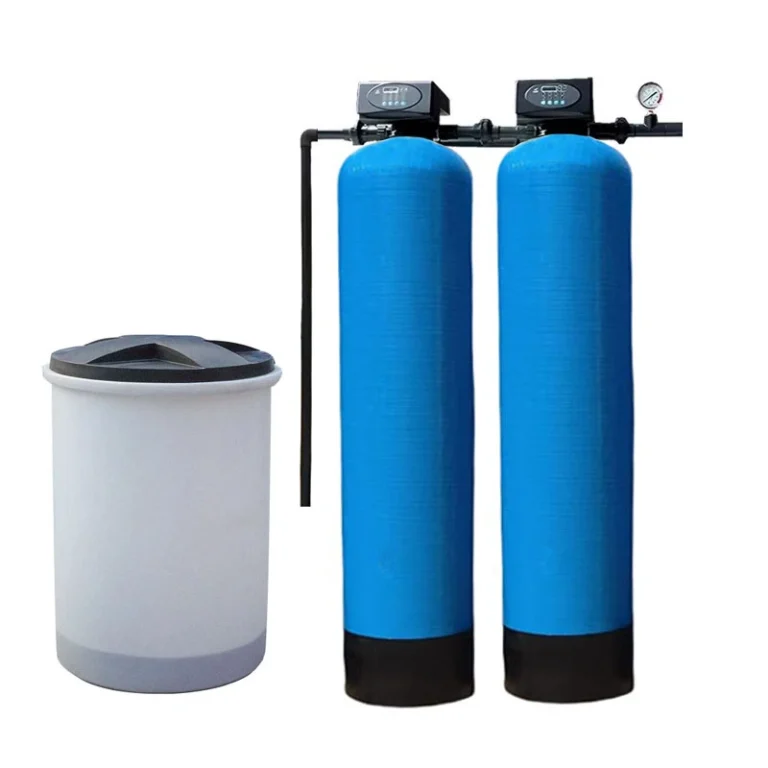
Best Automatic Water Softener system home for Hard Water Purification & Treatment Solutions

Premium Car and Window Cleaning System for Homeowners with Dual DI Tanks Purifier
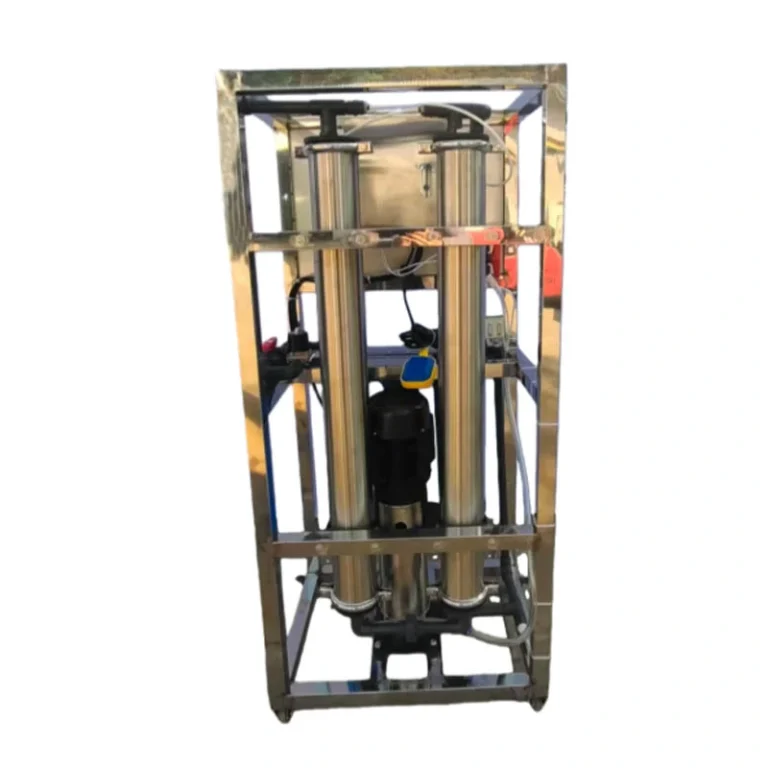
Whole-House Well Water Reverse Osmosis System
